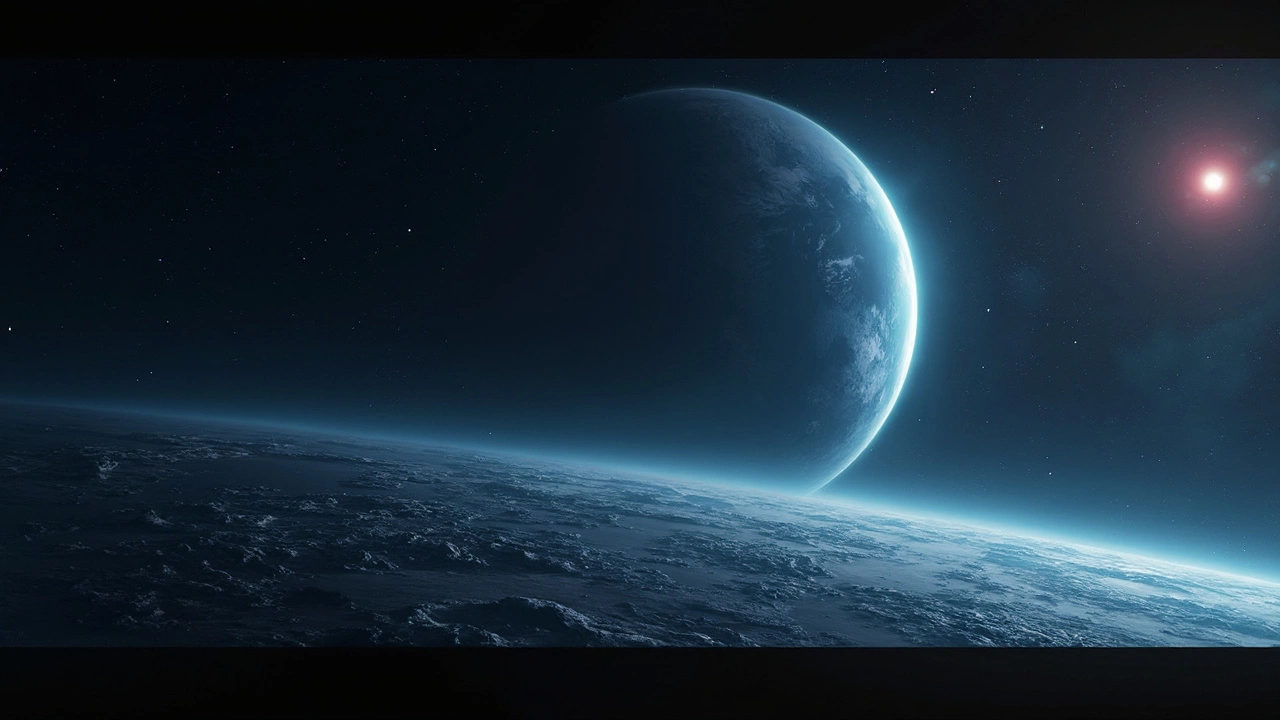Could K2-18b Be Hiding Signs of Life?
Astronomers think they’ve stumbled on something big: possible hints of alien life in the atmosphere of a planet far outside our solar system. The planet in question, K2-18b, has been nicknamed a ‘sub-Neptune’ and sits about 120 light-years away. At 2.6 times the size of Earth with almost nine times its mass, it’s no small world. What caught everyone’s attention? Sulfur gases—specifically dimethyl sulfide (DMS) and dimethyl disulfide (DMDS)—found swirling in its hydrogen-rich atmosphere.
The team, led by Nikku Madhusudhan at Cambridge, made these detections using the mighty James Webb Space Telescope (JWST). While earlier studies with JWST’s NIRISS and NIRSpec instruments hinted at DMS, this time they got clear signals thanks to the Mid-Infrared Instrument (MIRI). On Earth, these sulfur compounds come primarily from marine microorganisms, especially in ocean environments. Seeing them on K2-18b, where oceans might also exist deep under clouds, immediately raised eyebrows.

Life or Something Else? Why Scientists Are Split
The amount of DMS and DMDS found wasn’t just a trace—it reached over 10 parts per million. For context, Earth’s background DMS is far lower. Some scientists have predicted that Hycean planets—a term for hydrogen-rich worlds with global oceans—could see elevated concentrations of these gases if life-forms thrive in their waters. The theory matches what JWST spotted on K2-18b, making it a hot candidate for the search for life.
But the story isn’t that simple. While these sulfur gases are “alive and well” in Earth’s oceans, they don’t always mean living things are involved. For example, comets with zero biology can contain similar sulfur molecules through plain old chemistry. Planetary scientist Christopher Glein and astronomer Chris Lintott, both following the findings closely, warn that non-biological sources—geologic activity, chemistry, or even data errors—could explain what’s seen. Scientists also note that instrument glitches sometimes mimic real signals, so they’re not jumping to conclusions yet.
To sort out what’s really happening, the astronomers are lining up more uses of JWST. They want to check if the signal holds up under different conditions or with newer data. If so, the case for some form of life on K2-18b gets stronger—especially if all non-living sources are eliminated. But for now, the only thing clear is that this distant blue planet just got a whole lot more interesting.





